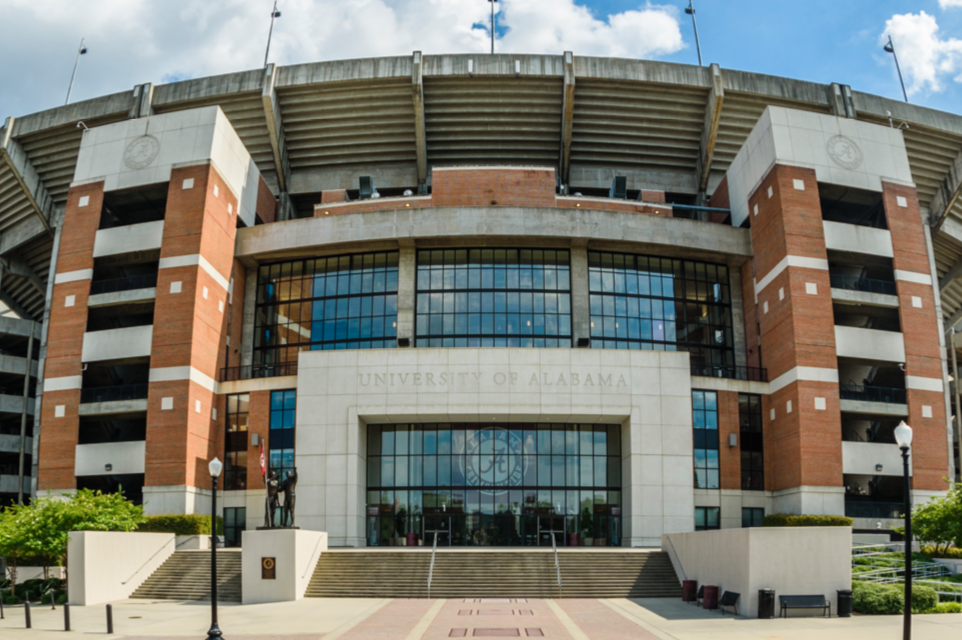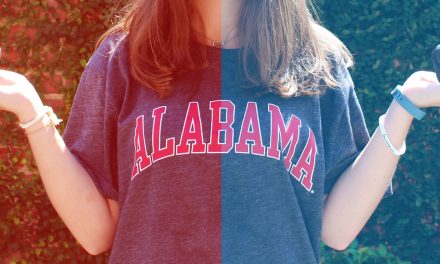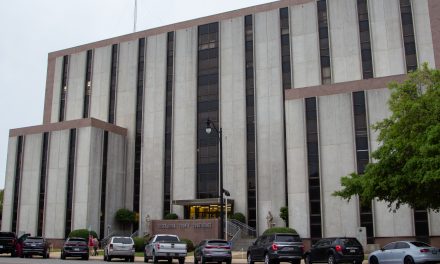STORY BY
SARA WEIGEL
PHOTOS BY
TARRAINA TURNER
DESIGN BY
TARRAINA TURNER
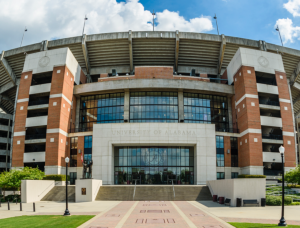
Have you ever wondered what could make a student from the beautiful beaches of Oahu, Hawaii or California, home to some of the most prestigious public colleges in the world, move across the country to the town of Tuscaloosa, Alabama? Or what this town might look like to someone from thousands of miles away? This article will provide you with some insight into these students journey to enrollment and the stark cultural differences they have noticed since enrolling.
In 1818, the federal government authorized Alabama for the establishment of a “seminary of learning,” and in 1820 the seminary was established and officially named The University of Alabama. Many people today think of UA as a trailblazer among public universities, a football powerhouse, and a school that attracts students from all across the country. However, The University of Alabama came from extremely humble beginnings. Although UA is now home to 38,392 students from 82 different countries and all 50 states, it has not always been able to boast these staggering statistics.
Even though the university was established in 1818, it was not until April 18th, 1831, that the first students were enrolled, 52 of them, all white males. In 1891, enrollment reached 167 students, and finally in 1893 a female joined the student body, which was after the University’s first football team was assembled. It wasn’t until 70 years later, in 1963, that there would be sustained enrollment of an African American at the university. Flash-forward to 2019 and the school has almost 40,000 students enrolled, over 50% of whom are out of state. One could say the school and city surrounding it has evolved over the last 200 years, and it is interesting to see why. What better way to find out than to ask the people who are part of this change, the student body.
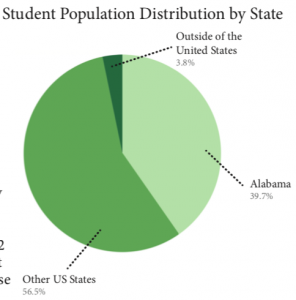
Even though the university was established in 1818, it was not until April 18th, 1831, that the first students were enrolled, 52 of them, all white males. In 1891, enrollment reached 167 students, and finally in 1893 a female joined the student body, which was after the University’s first football team was assembled. It wasn’t until 70 years later, in 1963, that there would be sustained enrollment of an African American at the university. Flash-forward to 2019 and the school has almost 40,000 students enrolled, over 50% of whom are out of state. One could say the school and city surrounding it has evolved over the last 200 years, and it is interesting to see why. What better way to find out than to ask the people who are part of this change, the student body.
Most people are familiar with the saying “a penny for your thoughts,” but after interviewing several Honors college students from outside the state of Alabama, many of them became familiar with the concept of free tuition for your ACT scores. When asking students from places like California and Hawaii what prompted them to even consider visiting the small town of Tuscaloosa, Alabama, they all said the same thing: free tuition. Although this sparked their interest, it did not seal the deal. After visiting the campus of The University of Alabama, these out of staters were drawn to two things that the state of Alabama does best: SEC football and southern hospitality. Ryan McMichael, an Aerospace Engineering major from Hawaii said, “When I came to Alabama it felt like a welcome mat had been placed out in front of me.”
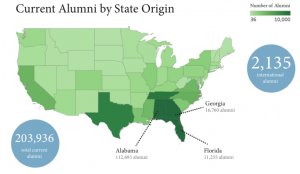
Although Hawaii is known for its aloha lifestyle that represents a peaceful and calming nature, Ryan even went a step further to say, “There is a much bigger culture about helping those around you and being friendly to those around you regardless of the circumstance just because you’re being a genuine, nice human being whereas in other places its genuinely more subdued, even in Hawaii.”
Ryan wasn’t the only student who noticed the genuine nature in the state of Alabama. Ellie Nations, a student from Folsom, California, says, “Californians are equally polite and friendly, but it’s just not as warm as people are down here.”
Although the southern hospitality was enough to spark the newcomers’ attention, the Crimson Tide was enough to keep them wanting more. Michael Jansen, a student from Houston described the competitive football climate as, “kind of charming” and went on to say even in Cowboy nation the football atmosphere, “doesn’t dominate the environment like that.” Even though there are students in attendance at the university from all over the world, multiple students described the culture around The Crimson Tide as unifying, and what better way to start a conversation with a Crimson Tide fan than two simple words:

There are certain things that people from all over the country find undeniably charming about the Heart of Dixie. It is easy for most people to adapt to the southern cuisine and vernacular, but there are more difficult things to swallow about southern culture than barbecue.
When asked what major cultural differences Ryan has had to adapt to since moving from Hawaii to Alabama his immediate response was, “Adapting to a very two-sided racial society, where you have white and black and all of the implications that come with that.”
Living in states like California and Hawaii Ryan said, “I have always had an incredible amount of racial diversity in places I have lived. We haven’t ever lived in a place where white people are the majority population.”
The lack of diversity in this region of the country is not only something people from other regions were quick to notice, but the southern dress code was something that was hard for people to adhere to. Ryan described the dress code in Alabama as much more formal than what he was accustomed to back home.
“In Alabama there is a completely different cultural paradigm to present yourself for certain social settings and like put an effort into these things as opposed to doing what you would do because there are certain dress codes dictations. It’s different here, it’s more formal,” said McMichael. Clearly Alabama has not adopted the casual culture that people in other regions of the country have.
The University of Alabama has come a long way since it was founded in 1818 and part of the acknowledgment should be attributed to the students that have had the courage to come here from all over the world. Alabama can be accredited with a lot of things, such as football, friendliness, and fried food, but there are other aspects of Alabama culture that have not been as easy for students from other parts of the country to get acclimated to. UA is making the right steps by providing incentives for high performing students from different geographical locations, demographics, and backgrounds.

